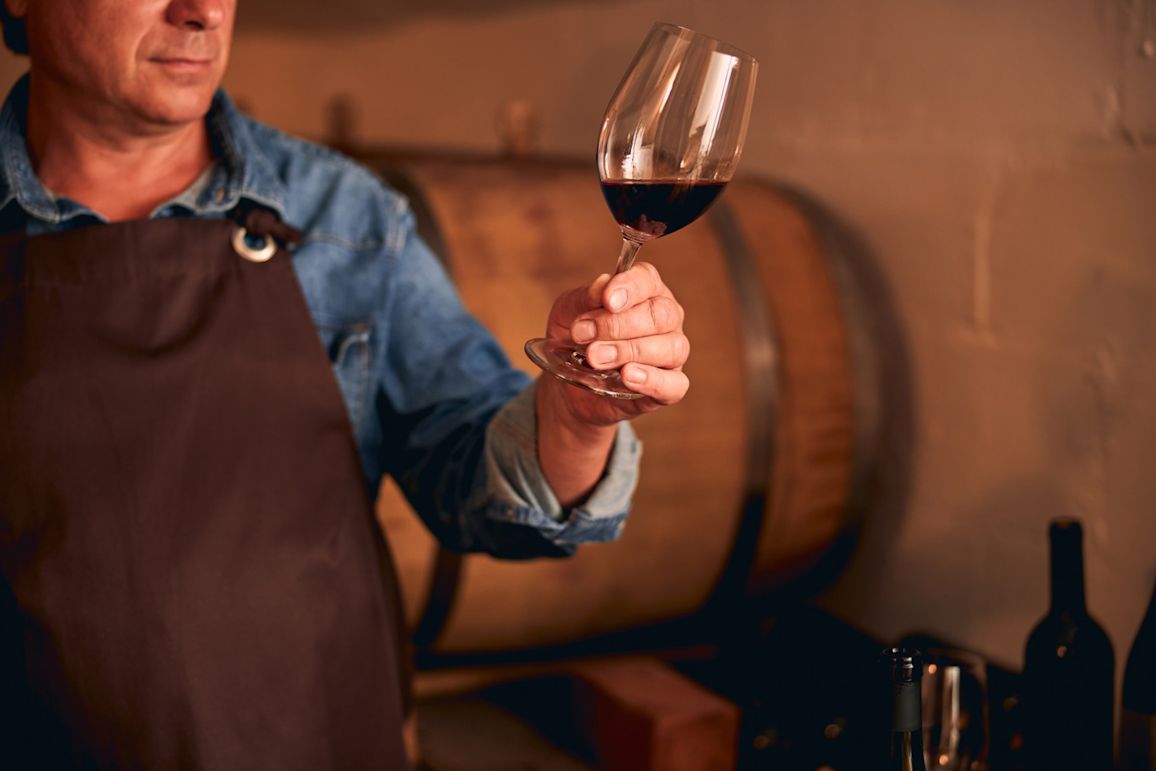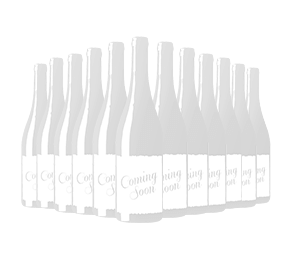Chat with Vinny
If you’ve read a few wine descriptions or heard someone discussing wine, then you’ve probably heard the word ‘tannin’. But what exactly are tannins? It’s time to decode the wine jargon. After all, tannins are a crucial part of how we taste wine – especially reds – giving structure and body, adding complexity and helping ageing.
Shop our popular range of red wines and order your favourite today.
What are tannins in wine?
Let’s get the science bit out of the way first. Tannins are a group of naturally occurring chemical compounds known as polyphenols. They are found in many plant-based foods and drinks, including fruits, vegetables, whole grains, cacao (which is used to make chocolate), tea, coffee and wine. These bitter and astringent compounds help protect plants from bacteria, fungi, insects and animal damage.
Tannins in wine come mainly from grape skins, seeds and stems. As all wine comes from grapes, you’d be forgiven for thinking all wines have tannins. In fact, the amount of tannins varies across the type of wine and how it is made.
Red wine has the most tannins as the grape skins and seeds are left to soak and colour the grape juice (a process known as maceration) for longer. White wines are typically made from grape juice only, so they have less in the way of tannins. Rosé and orange wines are macerated briefly with grape skins to extract colour but have fewer tannins than red wine.
Further tannins may be added from the wood if the wine – including white wine – is aged in wood barrels.

How tannins affect wine
Tannins add an astringent quality to the wine. They bind with the salvia proteins in your mouth, creating a dry, puckering sensation – similar to the one you get when sipping black tea or eating a square of dark chocolate. While that doesn’t sound ideal, tannins also add texture, structure and flavour to your wine.
Taste – Tannins help balance a wine’s sweet fruit flavours and acidity, preventing it from tasting overly sweet or “one-note”. Tannins create a palate-cleansing effect by binding with proteins in food. This means tannic wines are the perfect partner with rich and fatty foods, such as red meat.
Preservative – As a natural antioxidant, tannins help protect the wine from bacteria and oxidation, keeping it fresh for longer.
Structure – Tannins give the wine texture and structure, helping to balance flavours and acidity. They also add ‘body’ to the wine. High-tannin wines tend to feel fuller or richer when you drink them, whereas a low-tannin wine may feel lighter.
Ageing potential – Tannins help the wine age and develop over time. As the wine matures, tannins join together to form larger molecules, leading to a smoother, softer sensation in the mouth and more depth in flavour.
What do tannins in wine taste like?
Drinking wine with high tannin levels can leave a ‘bitter’ or drying sensation in the mouth – which can be refreshingly enjoyable, depending on personal preference. Some people enjoy the mouthfeel of tannic wines, while others find them too harsh. Wine tannins can be described in different ways, including:
Grippy, coarse or grainy wines have a more robust tannic structure that can create an astringent or drying sensation in the mouth. These full-bodied wines typically pair well with rich foods. A young Cabernet Sauvignon might fit this description.
Plush, soft, silky or velvety wines often have rounder, softer tannins that don’t leave your mouth too dry. An example could be a Pinot Noir.
Wines described as polished, refined or elegant may have high tannin levels, but they are typically well-balanced and add to the wine’s complexity rather than being overly astringent. Aged Bordeaux wines – often blends of Cabernet Sauvignon, Merlot and other varieties – fall into this category.
Shop our full range of Bordeaux wines to discover your perfect bottle.

Why are some wines high in tannins?
Various factors affect a wine’s tannins.
Grape variety – Some grapes naturally contain more tannins, typically those with thicker skins. For example, Cabernet Sauvignon and Nebbiolo are known for their high tannin content, while Pinot Noir and Gamay are on the lower end.
Climate – Grapes grown in warm, sunny climates ripen fully and generally have higher tannin levels, whereas grapes grown in cooler climates ripen more slowly and typically contain fewer tannins.
Harvesting – The timing of harvest can impact tannin levels. Grapes that are harvested earlier may have greener, more astringent tannins, while those harvested later may have riper, softer tannins.
Winemaking – The longer the grape skins, seeds and stems are in contact with the grape juice (known as maceration), the more tannins the wine will have. Maturing wine in oak barrels will also impart tannins, so some oaked white wines, such as Chardonnay and Viognier, contain some tannins.

Red wines high in tannins
Red wines renowned for their high tannin levels are:
Cabernet Sauvignon – Known for its velvety feel and deep, full-bodied flavour profile.
Syrah/Shiraz – Full-bodied red wines with high tannin levels, often matured in oak barrels to soften the tannins.
Petit Verdot – The grape’s thick skin holds a high concentration of tannins.
Nebbiolo – Full of firm tannins with an impressive structure that makes it age-worthy.
Sangiovese – Brimming with firm tannins that help give the wine excellent ageing potential.
Low-tannin red wines
Some examples of low-tannin red wines are:
Pinot Noir – Thin-skinned grapes and a short fermentation time make for a low-tannin wine.
Gamay – The grape’s thin skins, alongside their shorter growing season, contribute to their low tannins.
Barbera – These grapes have thin skins, which contain fewer tannins.
Frappato – These grapes are usually harvested earlier in the season before the tannins have fully developed.
What food pairs best with high- and low-tannin wines?
Tannic wines should be paired with fatty, rich dishes that help soften the wine’s tannins and bring out its fruitier characteristics. Their astringency cuts through the fat in a dish, cleansing your palate between each bite. Good partners include:
Red meats, particularly beef, lamb and game.
Cured meats.
Strong-flavoured cheeses, such as mature Cheddar or blue cheese.
Dark chocolate.
Red wines with low-medium tannins work well with food such as:
Mushrooms and grilled vegetables.
Tomatoes-based dishes.
Salmon.
Creamy sauces, such as pasta Alfredo sauce.
Soft cheeses, such as Brie or Camembert.
Dishes with nuts, such as almonds or walnuts.
Find a bottle you’ll love from our extensive selection of red wines, delivered straight to your door.
About the author
Chris Larkin
A seasoned copywriter with over two decades experience, Chris has been part of the team since 2021. At Laithwaites HQ, you’ll find him either working on our latest catalogue or creating informative content for our website. Qualified to WSET Level 3 Wine, Chris is as geeky about wine as he is about copywriting. But when it comes to choosing a special bottle, he is a traditionalist, and loves a good Bordeaux or Mâcon Chardonnay.

